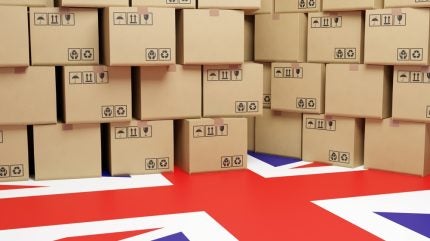
New figures from the British Retail Consortium (BRC) suggest that over 80 per cent of the additional cost incurred by the UK’s new packaging tax—operating under the extended producer responsibility (EPR) scheme—will be passed on to consumers.
The tax came into force at the beginning of October 2025.

Discover B2B Marketing That Performs
Combine business intelligence and editorial excellence to reach engaged professionals across 36 leading media platforms.
Leading retailers warn of mounting financial and administrative pressure due to EPR, saying that the burden of compliance and costs will further strain a sector already squeezed by wage and tax increases.
Rising costs and inflation risks under the new packaging tax
The EPR scheme requires firms that produce packaging destined for households to pay fees based on material type and volume. According to the BRC’s survey, most of these costs cannot be absorbed within existing margins.
The BRC notes that retailers already faced around £5 billion in extra costs last year owing to rises in employer National Insurance contributions and increases to the National Living Wage.
The new packaging tax is seen as an additional inflationary pressure on a fragile retail sector.

US Tariffs are shifting - will you react or anticipate?
Don’t let policy changes catch you off guard. Stay proactive with real-time data and expert analysis.
By GlobalDataAnalysts, including the Bank of England, estimate that the policy could add 0.5 percentage points to food inflation—a significant rise in a sector where households are already feeling the squeeze on grocery bills.
Compliance burden and reporting demands intensify
Retailers report that 85 per cent have seen their administrative workload increase “significantly” since the introduction of EPR. Under the scheme, firms must now collect and submit detailed data on packaging composition, weight, and recyclability.
Under recent regulatory guidance, businesses are required to report packaging activity, class (primary, secondary, transit), material categories, and recyclability assessments (RAM) for large producers.
In a mitigation, regulators have temporarily suspended compliance enforcement for the first half of 2025 with regard to recyclability assessment data, though other reporting obligations remain active.
Retailer responses and demands for transparency
Faced with the cost burden, retailers are planning two responses: 85 per cent intend to increase their use of sustainable packaging, and 78 per cent plan to reduce total packaging volume.
However, they stress that consumers and the environment must see real benefits from the scheme.
The BRC is calling on government to legally ring-fence EPR funds so that revenue can only be used by local authorities for household recycling collection and system improvements.
Andrew Opie, BRC director for food & sustainability, said that while retailers accept the “polluter pays” principle, the timing of the levy during a cost-of-living crisis means consumers will rightly ask what they are getting for higher prices.
What this means
The new packaging tax places clear upward pressure on retail prices, especially for groceries and fast-moving consumer goods. The added compliance burden may weigh more heavily on smaller firms less able to scale reporting systems.
Key uncertainties remain: how effectively EPR funds will be reinvested in recycling infrastructure, whether modulation (discounts for greener packaging) will shift incentives, and whether consumer resistance forces some retailers to absorb costs or delay price rises.
Future reporting cycles and enforcement decisions will reveal whether the burden truly falls on consumers or if regulatory adjustments soften the impact.





